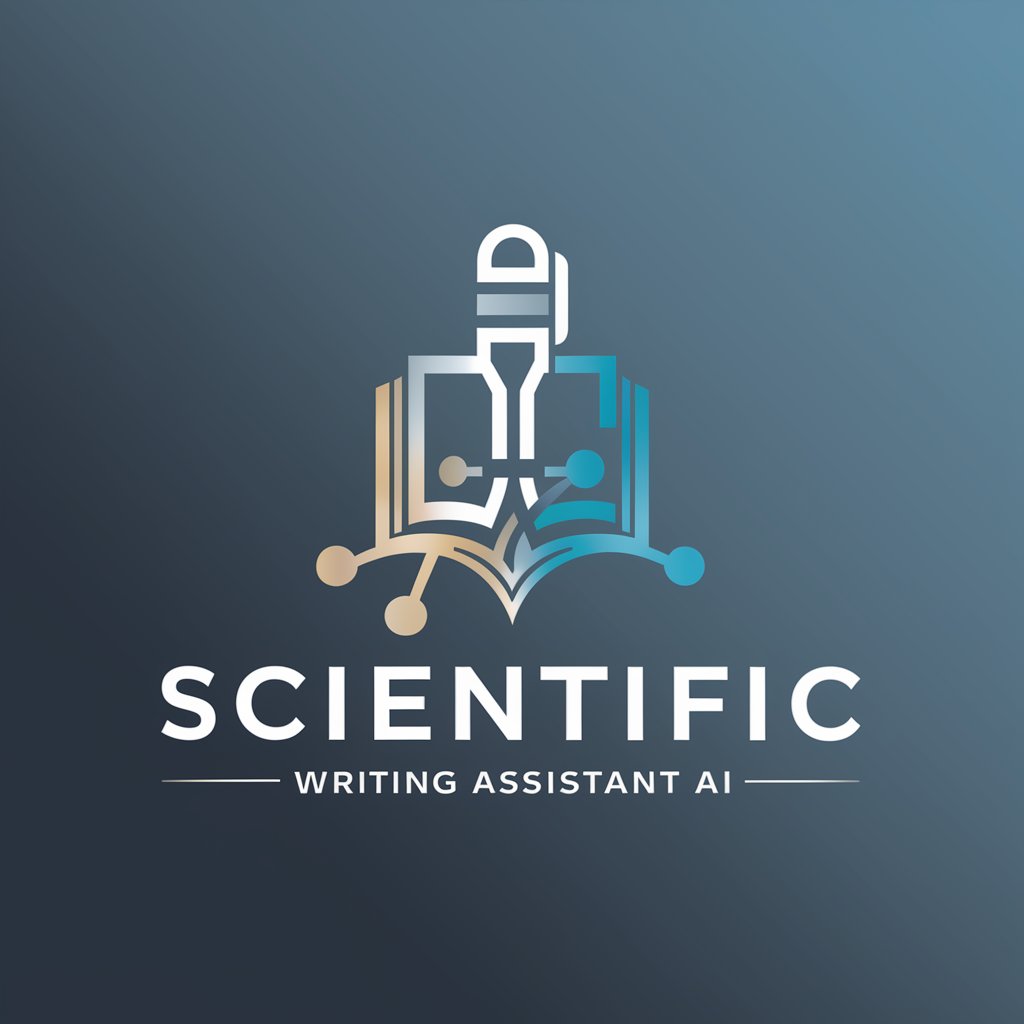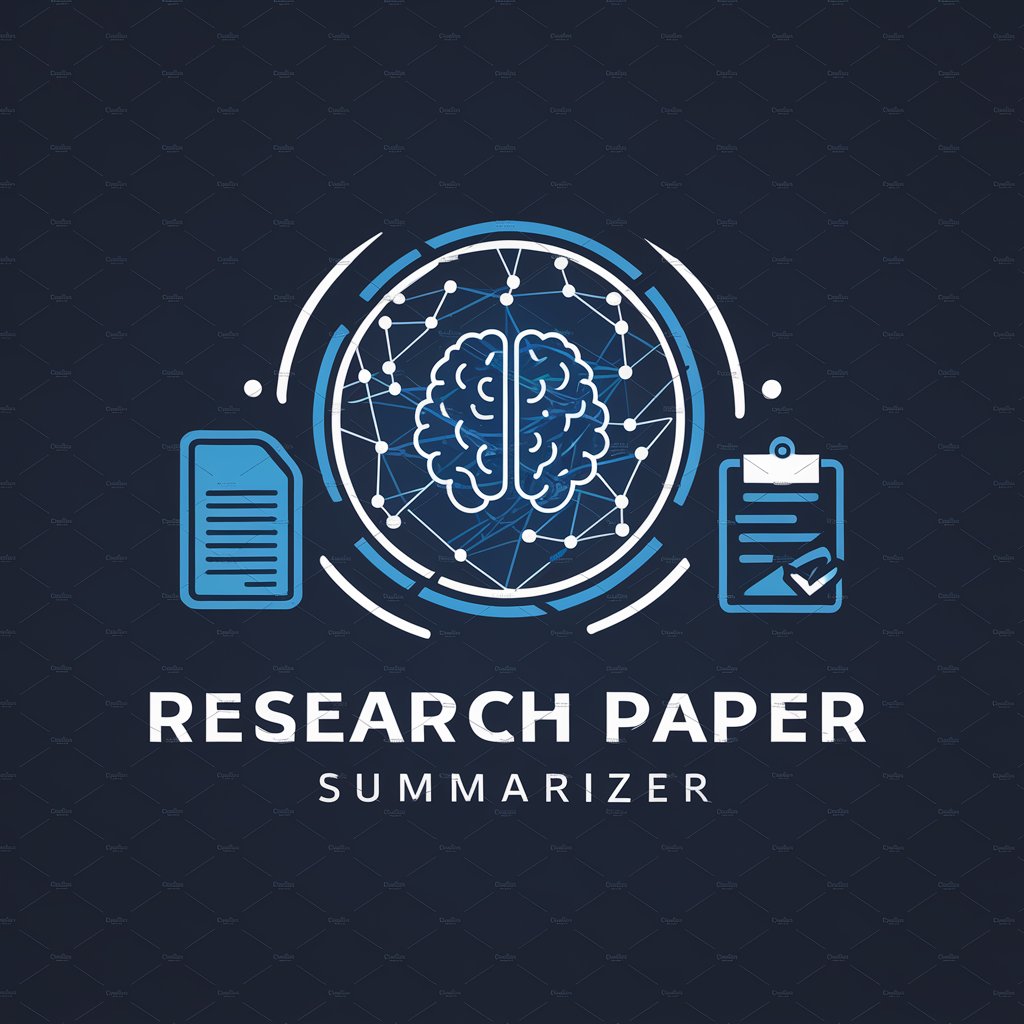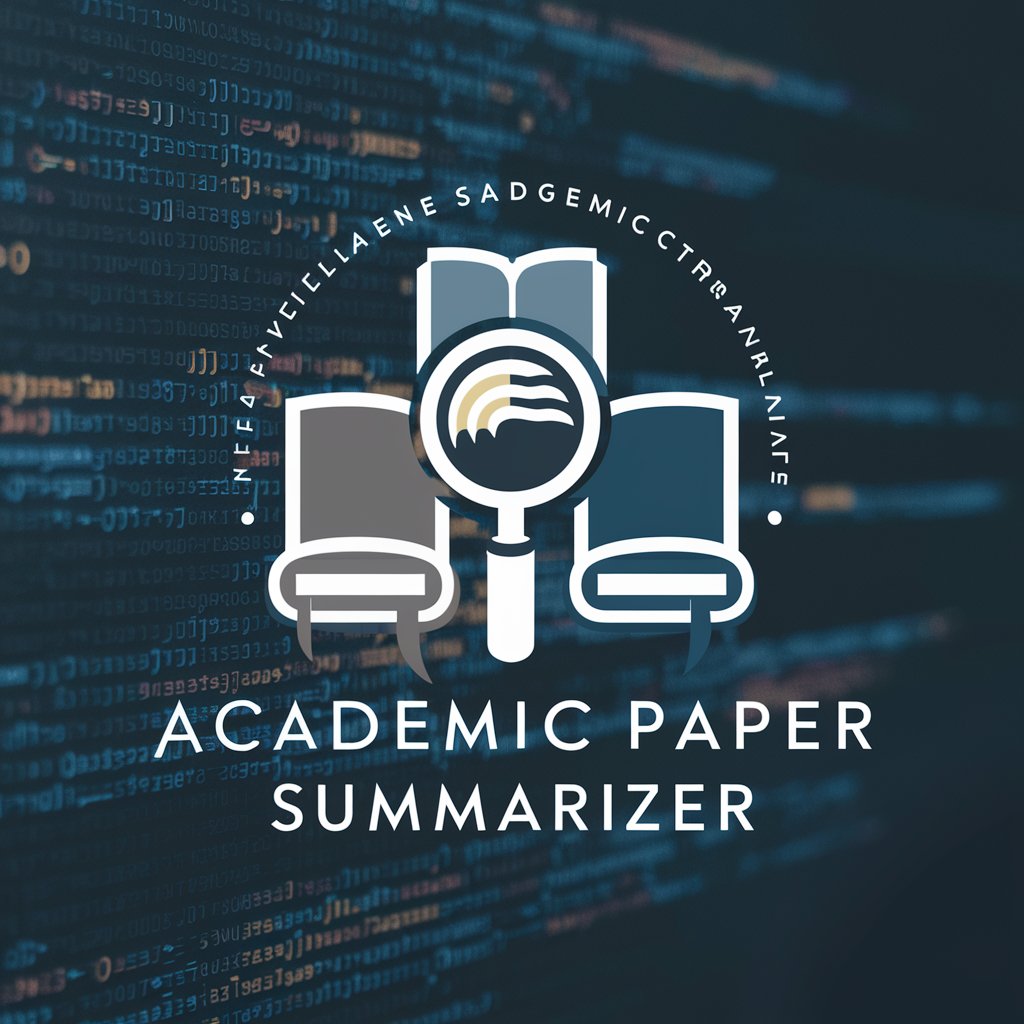
Scientific Paper Summarizer - Academic Summarization Tool

Welcome! Let's simplify some complex research together.
AI-powered academic insights at your fingertips
Summarize the main findings of the paper titled
What are the key methodologies used in
Provide a brief overview of the research question addressed in
Explain the significance of the results in
Get Embed Code
Understanding Scientific Paper Summarizer
Scientific Paper Summarizer is a specialized AI tool designed to simplify the complexity of academic papers, making them more accessible to a broader audience. Its core purpose is to distill dense, technical information into concise, understandable summaries. This involves parsing through scientific jargon, data, and findings to present the essence of a paper in plain language. For example, if a user inputs a detailed paper on quantum computing, the Summarizer would output a summary explaining the key objectives, methodologies, findings, and implications of the research, without requiring the user to sift through complex equations or niche terminology. Powered by ChatGPT-4o。

Key Functions of Scientific Paper Summarizer
Abstract Generation
Example
Transforming a 30-page paper on climate change impacts into a succinct abstract highlighting main findings, methodologies, and future research directions.
Scenario
Useful for researchers needing quick insights from multiple papers or for non-experts seeking to grasp fundamental concepts without delving into technical details.
Keyword Extraction
Example
Identifying and listing key terms from a biomedical research paper, such as 'CRISPR-Cas9', 'gene editing', or 'genetic disorders'.
Scenario
Helps users quickly understand the focus areas of a paper, facilitating literature reviews or identification of relevant research.
Critical Analysis Summarization
Example
Summarizing the discussion section of a paper on artificial intelligence ethics, focusing on arguments made, ethical considerations, and societal implications.
Scenario
Beneficial for ethicists, policy makers, or students in humanities exploring interdisciplinary connections with technology.
Who Benefits from Scientific Paper Summarizer?
Academic Researchers
Researchers can leverage the Summarizer to swiftly get an overview of existing literature, identify research gaps, and understand complex papers outside their expertise, enhancing interdisciplinary research.
Students
Students, especially those new to a field or facing time constraints, can use the tool to aid in understanding the gist of academic papers, facilitating learning and research project development.
Journalists & Science Communicators
This group can use the Summarizer to quickly grasp the findings of new studies, enabling them to report on scientific developments accurately and in an understandable manner to the public.

How to Use Scientific Paper Summarizer
Start with a Visit
Initiate your experience by visiting yeschat.ai, which offers a free trial without the need for a login or ChatGPT Plus subscription.
Choose Your Document
Select the academic paper or document you wish to summarize. Ensure it's in a compatible format (PDF, DOCX, or TXT) for the best results.
Upload and Process
Upload your document to the platform. The Scientific Paper Summarizer will then process the document to understand its structure and content.
Review the Summary
Once processing is complete, review the generated summary. It will distill the key points and findings from your document into an easily understandable format.
Optimize Your Experience
For optimal results, provide clear, high-quality scans of your documents. Use the feedback feature to improve accuracy over time.
Try other advanced and practical GPTs
Scientific Writing Assistant
Empower Your Research with AI

Scientific Article Summary
Empowering research with AI-driven insights.

Scientific Research Assistant
Empowering research with AI intelligence.

Advanced Scientific Article Reviewer
Elevate Your Research with AI-Powered Insights

Scientific Article Writer GPT
Enhancing your research writing with AI precision.

Scientific Explorer
Empowering discovery with AI-driven insights.

Scientific Article Summarizer
Unlock insights with AI-powered summaries

Culture Compass
Navigating Cultures with AI

Culture Coder
Decoding culture, reshaping realities.

Culture administrative.
Empowering your firefighter exam success with AI.

Black Hat
Master the Dark Arts with AI

Sorting Hat
Learn with magic, thrive in knowledge.

Frequently Asked Questions about Scientific Paper Summarizer
What types of documents can Scientific Paper Summarizer process?
The tool is designed to process academic papers, research articles, and scientific reports in PDF, DOCX, or TXT formats, making it versatile for various scholarly materials.
How accurate is the summary generated by the tool?
The accuracy of the summary depends on the clarity and quality of the document uploaded. The tool uses advanced AI to ensure high fidelity to the original content.
Can I use Scientific Paper Summarizer for non-academic texts?
While primarily designed for academic texts, the tool can process non-academic documents but is optimized for scientific literature, where it performs best.
Is there a limit to the size of the document I can upload?
Yes, there might be a limit to ensure optimal processing time and efficiency. Check the platform's guidelines for specific size limitations.
How does Scientific Paper Summarizer handle complex diagrams and tables in documents?
The tool focuses on text-based content. While it can recognize the presence of diagrams and tables, it summarizes the textual descriptions rather than the visual elements.





